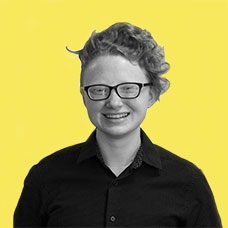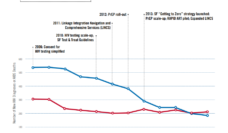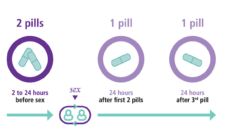Gay and bisexual men accounted for about 70% of new HIV diagnoses in the US last year, and most of these diagnoses were among people under 35. If HIV rates persist at current levels, half of young gay Black men and a quarter of young gay Latino men are projected to be diagnosed with HIV in their lifetimes. Though they carry a lot of the HIV burden, little is known about the degree to which young gay and bisexual men seek sexual health care or understand their sexual health care options.
Michael Newcomb and colleagues surveyed cisgender males between the ages of 13 and 18 who were attracted to, and had sexual experience with, other cisgender men. They examined perceived and realized access to sexual healthcare including HIV and STI testing, PrEP, HIV treatment, and counseling where they could be open about their sexual orientation.
Among participants in this study, Black, Latinx, and other teens of color were less likely to have seen a doctor in the past 12 months than White teens. When teenagers went to their health care provider, providers talked about sexual orientation and behavior, condom use, and HIV testing at similar rates across races.
About 30% of participants said a health care provider asked them about sexual orientation in their visit; in the South, only 19% of teens were asked. The study defined red states as those that voted for Donald Trump in the 2016 election and blue states as those that voted for Hillary Clinton. Participants in red states were less likely to have spoken to a provider about sex with male partners, condom use with male partners, and HIV testing in the past 12 months than participants in blue states. Previous research has documented higher levels of LGBTQ stigma in rural, Southern, and red states.
Participants in red states were less likely to have spoken to a provider about sex with male partners, condom use with male partners, and HIV testing in the past 12 months than participants in blue states.
Participants of color had less perceived access to mental health counseling where they felt comfortable discussing sexual orientation than White participants. Black participants also reported less access to HIV treatment than white participants. Rural residents had significantly less perceived access to HIV treatment and therapy compared to urban dwellers. Participants had similar perceived access to sexual healthcare despite their geographic region or political climate.
One important finding is that adolescent sexual minority males of color are just not getting in the door of health care providers’ offices. Even if Black and Latinx gay and bisexual teenagers receive similar sexual health care to White teens when they’re at appointments, getting to providers itself appears to be a large barrier.
Additionally, teens of color in particular don’t think that they can speak with mental health professionals about their sexual orientation. Gay and bisexual teens of color living in red states and in the South face additional barriers, namely that their providers avoid discussing sexual health with them. Interventions to prevent new HIV infections should explore how to get bisexual and gay teens of color into doctors’ and counselors’ offices to receive sexual health care.
Photo via Getty Images














